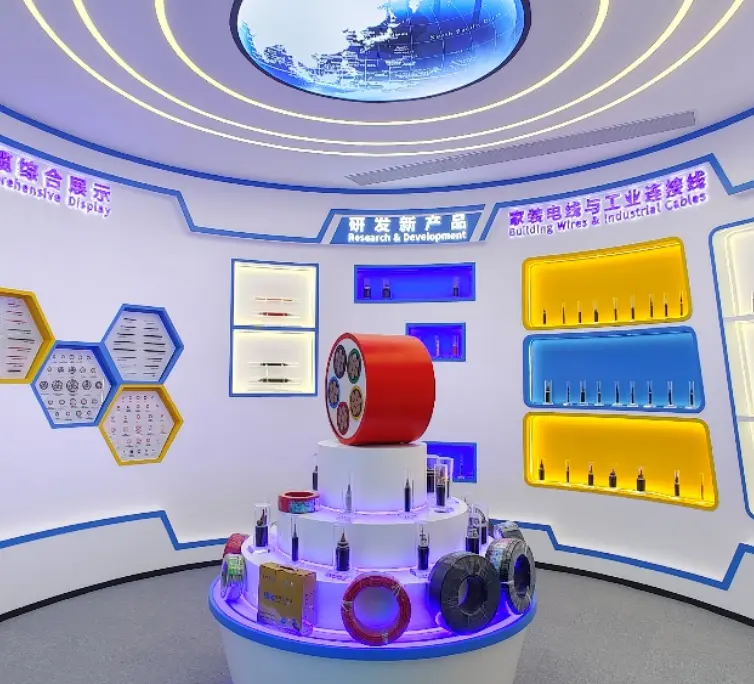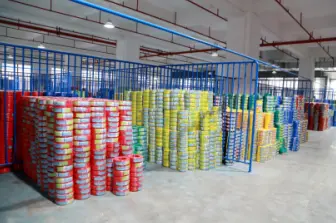Fire is one of the most dangerous disasters in human society. Fire protection cable, as the "lifeline" of buildings, plays a crucial role in transmitting electricity and maintaining the operation of emergency equipment during a fire. Unlike ordinary cables, fire protection cable needs to maintain stable function even under high temperatures, dense smoke, and direct flames. This article will delve into the five core types of fire protection cables and their unique properties, unveiling the scientific principles behind these "invisible defense lines".
Flame Retardant Cable: The "Firewall" Cutting Off the Spread of Fire
Flame retardant cables suppress combustion reactions by adding flame retardants (such as aluminum hydroxide, magnesium hydroxide) to the insulation layer and sheath. When exposed to fire, these cables quickly form a carbonized layer, blocking the contact between oxygen and combustible materials, achieving a "self-extinguishing" effect.
Core Application: Suitable for high-rise buildings, shopping malls, and other densely populated places for regular power transmission, where they can delay the spread of fire during the early stages of a fire.
Classification Standards: Classified into three levels based on flame retardancy: ZA, ZB, and ZC (ZA being the highest).
Fire Rated Electrical Cable: The "Power Guardian" in High Temperatures
The core of fire rated electrical cable lies in their unique mica tape wrapping structure. Mica, when exposed to high temperatures, forms a ceramic protective layer that isolates the conductor from direct flame damage, ensuring continuous power supply for over 90 minutes at temperatures up to 750°C.
Core Application: Key equipment such as fire pumps, emergency lighting, and alarm systems, ensuring that the equipment remains powered during a fire.
Technological Upgrade: Some products use a dual-layer mica and ceramic silicone rubber composite structure, increasing the fire resistance time to 3 hours.
Halogen-Free Low Smoke Cable: The "Dual-Excellence" of Environmental and Safety Features
Traditional PVC cables release large amounts of toxic hydrochloric acid gas and thick black smoke when burned. Halogen-free cables, made from polyolefin materials, release only a small amount of white smoke, reducing the concentration of toxic gases by over 80%.
Core Application: Closed spaces such as subways, hospitals, and data centers, reducing the risk of "secondary disasters".
International Trend: The European Union's RoHS Directive has mandated the use of halogen-free materials in public buildings.
Mineral Insulated Cable: The "Fireproof King" That Never Corrodes
Mineral insulated cables, with magnesium oxide powder as the insulation layer and copper tubes as the sheath, are known as "ultimate fireproof cables". They can withstand temperatures above 1000°C, and are also water-resistant, explosion-proof, and corrosion-resistant, with a service life exceeding 100 years.
Core Application: Extreme environments such as nuclear power plants and petrochemical industries. They are also used in places like the London Underground and the Burj Khalifa in Dubai.
Fire Resistant Cable: The "Smart Barrier" for Active Defense
Fire resistant cables use an expandable flame-retardant technology. When exposed to fire, the outer coating rapidly expands, forming a foam-like carbon layer that can be up to 50 times thicker than its original volume. This layer not only isolates high temperatures but also prevents short circuits in the cables.
Core Application: IoT fire protection systems in smart buildings, ensuring stable signal transmission.
Future Direction: Some laboratories are researching "self-diagnostic fire-resistant cables" with embedded temperature sensors, which can provide early warnings for overheating risks.
How to Choose Fire Protection Cable? Remember These 3 Principles
Safety Matching Principle: Flame retardant cables are suitable for regular areas, while fire rated electrical cable should be used for core fire protection equipment.
Environmental Adaptation Principle: Mineral insulated cables are best for humid environments, while halogen-free low smoke cables are preferred for closed spaces.
Lifecycle Cost Principle: While mineral insulated cables have higher initial costs, their characteristics of maintenance-free use for over a century can reduce total costs in the long run.
The design of fire protection cable reflects the deep integration of material science and safety engineering. From flame retardant to fire rated, from passive defense to intelligent early warning, each cable is a technological defense line built by engineers to safeguard lives. Understanding the characteristics of these "invisible guardians" allows for more scientifically-informed choices in building design, ensuring that technology truly protects lives.
 English
English  français
français  Deutsch
Deutsch  العربية
العربية  tiếng việt
tiếng việt  ไทย
ไทย  čeština
čeština  Indonesia
Indonesia  Eesti
Eesti  български
български  slovenčina
slovenčina 



